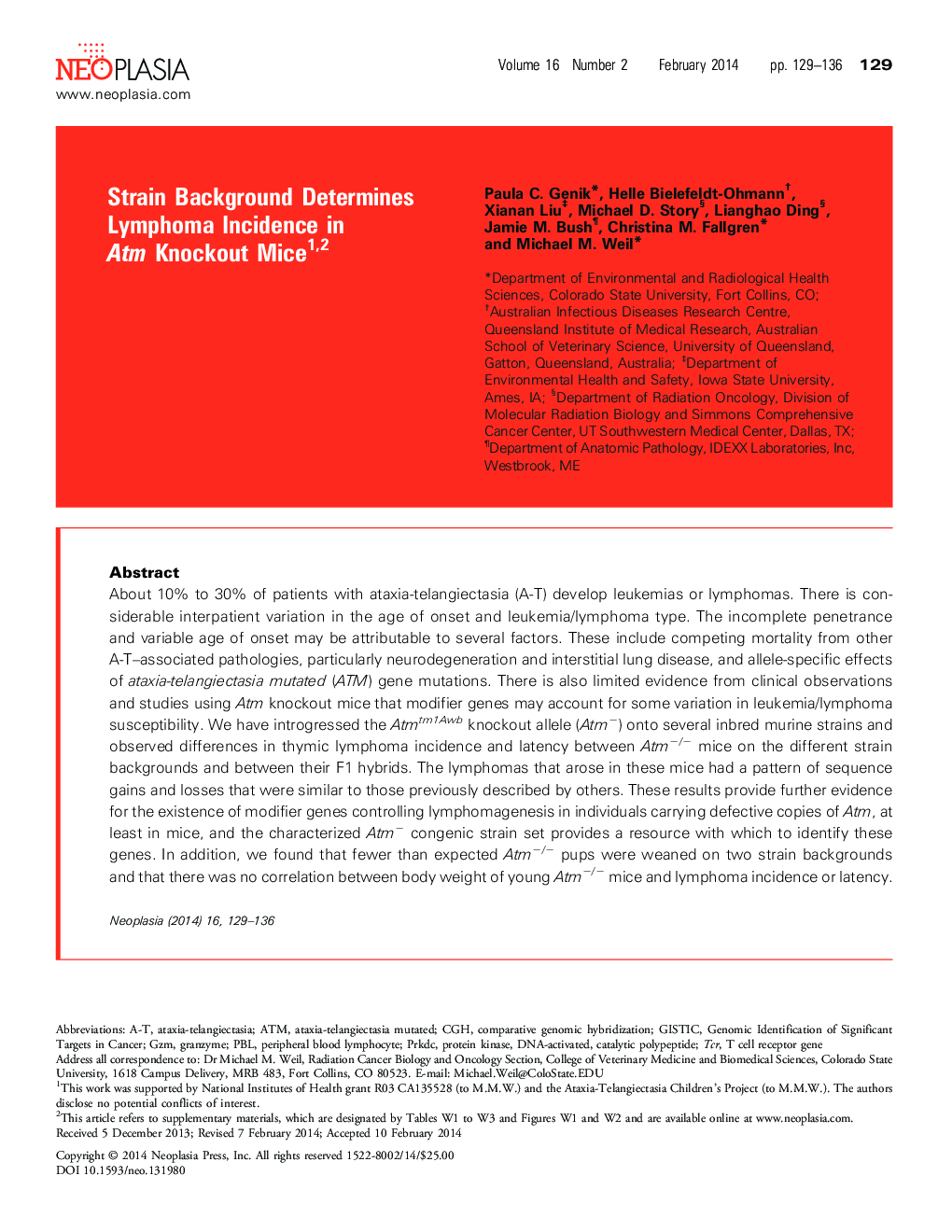| Article ID | Journal | Published Year | Pages | File Type |
|---|---|---|---|---|
| 2151432 | Neoplasia | 2014 | 10 Pages |
Abstract
About 10% to 30% of patients with ataxia-telangiectasia (A-T) develop leukemias or lymphomas. There is considerable interpatient variation in the age of onset and leukemia/lymphoma type. The incomplete penetrance and variable age of onset may be attributable to several factors. These include competing mortality from other A-T-associated pathologies, particularly neurodegeneration and interstitial lung disease, allele-specific effects of ataxia-telangiectasia mutated (ATM) gene mutations. There is also limited evidence from clinical observations and studies using Atm knockout mice that modifier genes may account for some variation in leukemia/lymphoma susceptibility. We have introgressed the Atmtm1Awb knockout allele (Atmâ) onto several inbred murine strains and observed differences in thymic lymphoma incidence and latency between Atm-/- mice on the different strain backgrounds and between their F1 hybrids. The lymphomas that arose in these mice had a pattern of sequence gains and losses that were similar to those previously described by others. These results provide further evidence for the existence of modifier genes controlling lymphomagenesis in individuals carrying defective copies of Atm, at least in mice, the characterized Atmâ congenic strain set provides a resource with which to identify these genes. In addition, we found that fewer than expected Atm-/- pups were weaned on two strain backgrounds and that there was no correlation between body weight of young Atm-/- mice and lymphoma incidence or latency.
Keywords
Related Topics
Life Sciences
Biochemistry, Genetics and Molecular Biology
Cancer Research
Authors
Paula C. Genik, Helle Bielefeldt-Ohmann, Xianan Liu, Michael D. Story, Lianghao Ding, Jamie M. Bush, Christina M. Fallgren, Michael M. Weil,
